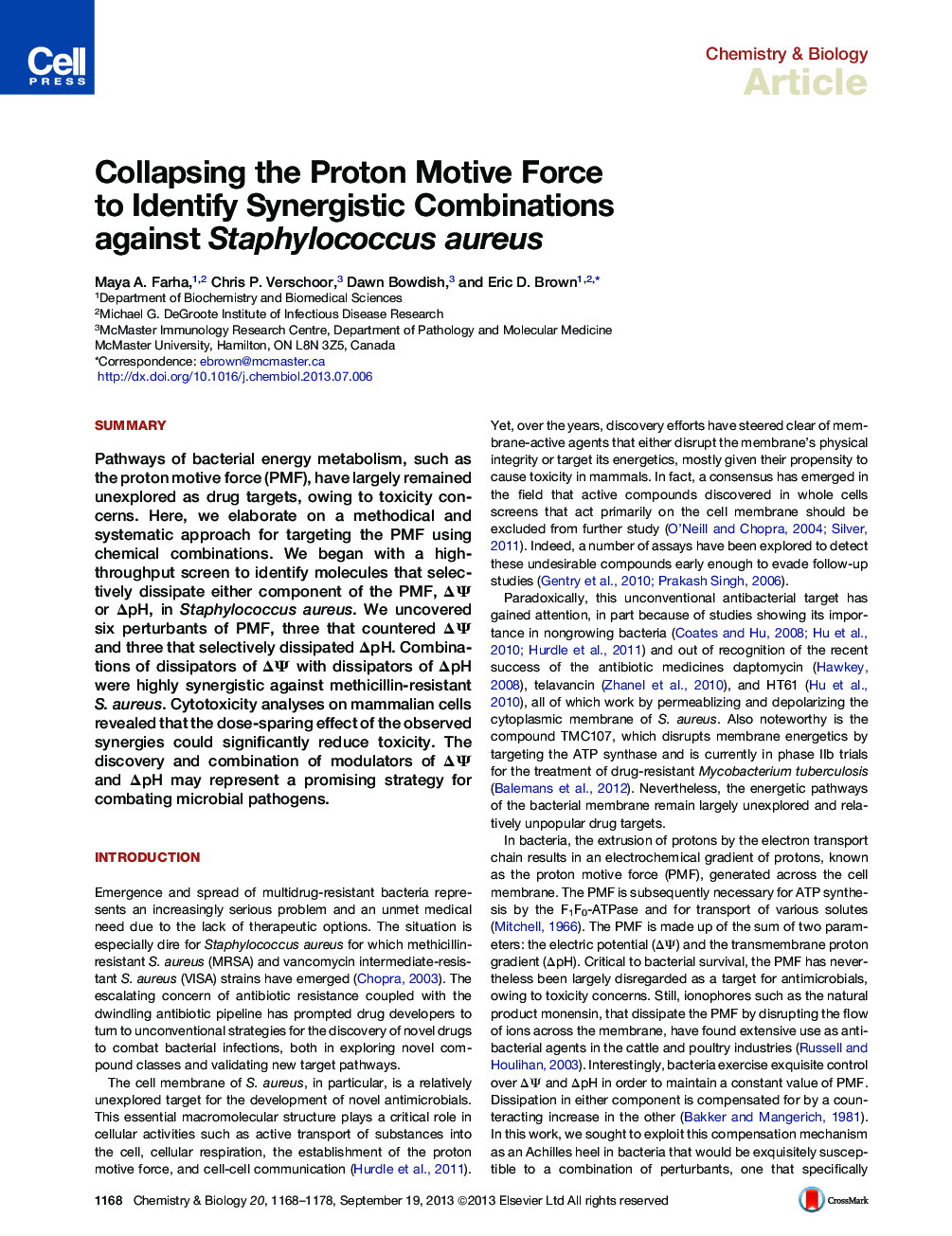| Article ID | Journal | Published Year | Pages | File Type |
|---|---|---|---|---|
| 1391755 | Chemistry & Biology | 2013 | 11 Pages |
•Fluorescence-based screen to identify dissipaters of the PMF of Staphylococcus aureus•Screen identified three selective modulators of ΔΨ and three dissipaters of ΔpH•Strategically modulating ΔΨ and ΔpH through chemical combinations leads to synergy•Combinations allow efficacy to be achieved with lower doses, mitigating toxicity
SummaryPathways of bacterial energy metabolism, such as the proton motive force (PMF), have largely remained unexplored as drug targets, owing to toxicity concerns. Here, we elaborate on a methodical and systematic approach for targeting the PMF using chemical combinations. We began with a high-throughput screen to identify molecules that selectively dissipate either component of the PMF, ΔΨ or ΔpH, in Staphylococcus aureus. We uncovered six perturbants of PMF, three that countered ΔΨ and three that selectively dissipated ΔpH. Combinations of dissipators of ΔΨ with dissipators of ΔpH were highly synergistic against methicillin-resistant S. aureus. Cytotoxicity analyses on mammalian cells revealed that the dose-sparing effect of the observed synergies could significantly reduce toxicity. The discovery and combination of modulators of ΔΨ and ΔpH may represent a promising strategy for combating microbial pathogens.
